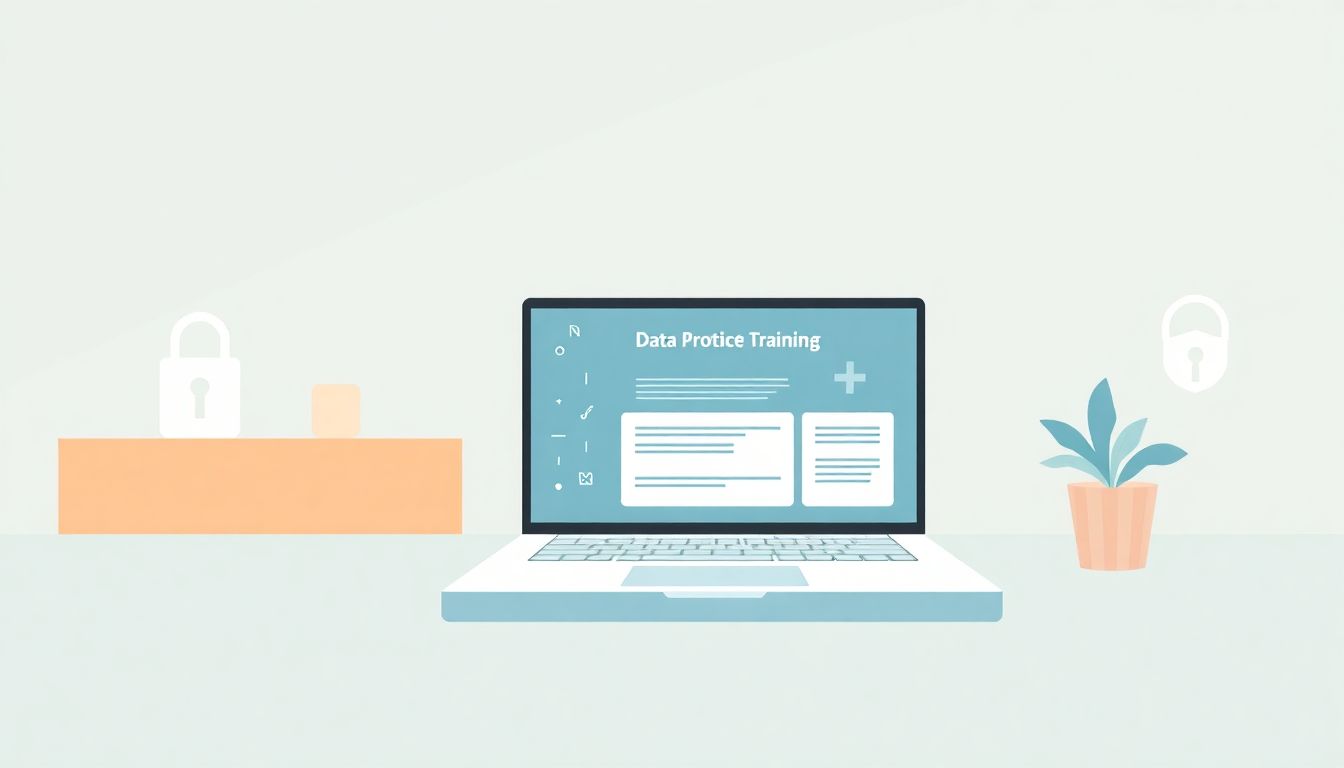In today’s digital world, cybersecurity training can feel overwhelming. You might be wondering how to effectively engage your team and keep them informed about the latest threats. You’re definitely not alone in this struggle!
But what if I told you that crafting effective training scenarios is easier than you think? Stick around, and I’ll share some fantastic prompts to help you leverage ChatGPT in your cybersecurity training. You’ll find practical ideas that can transform your approach.
From simulated phishing attacks to tips on creating secure password policies, we’re diving into a treasure trove of prompts designed to boost awareness and preparedness. Let’s unlock this knowledge together!
Key Takeaways
- Engage teams with realistic cybersecurity training scenarios using ChatGPT prompts.
- Offer quizzes and role-playing exercises to boost learning and retention.
- Raise phishing awareness through simulated emails and training modules.
- Prepare incident response drills to ensure teams know their roles during cyber incidents.
- Establish strong password policies and teach employees best practices in password management.
- Quickly identify and report security threats with clear guidelines and scenarios.
- Regularly evaluate training effectiveness to improve cybersecurity awareness programs.

Effective ChatGPT Prompts for Cybersecurity Training Scenarios
Using ChatGPT for cybersecurity training can enhance engagement and retention of vital information.
Here are some effective prompts to kickstart your training scenarios:
- “Create a realistic cybersecurity training scenario focusing on data breaches and employee response.”
- “List 5 engaging activities for staff to learn about cybersecurity best practices using interactive AI.”
- “Draft a training session outline that uses ChatGPT to address common cybersecurity myths.”
- “Generate a quiz format using ChatGPT to test knowledge on cybersecurity protocols and procedures.”
- “Outline a role-playing exercise utilizing ChatGPT to simulate real-world cybersecurity incidents.”
Understanding Cybersecurity Basics through ChatGPT
Cybersecurity basics are vital for everyone in an organization, not just the IT department.
Using ChatGPT can make learning these concepts much easier. Here are some prompts to help people grasp the fundamentals:
- “Explain the concept of cybersecurity in simple terms for a non-technical audience.”
- “Define key cybersecurity terms such as malware, phishing, and firewall.”
- “Create a simplified guide on common cybersecurity threats faced by organizations today.”
- “List best practices for personal cybersecurity employees can adopt in their everyday work.”
- “Summarize the importance of complying with data protection regulations like GDPR.”
Simulated Phishing Attacks: ChatGPT Prompts to Raise Awareness
Phishing attacks are a common way hackers try to break into systems, and awareness is key to prevention.
Here are some prompts to simulate phishing attack scenarios effectively:
- “Generate an email sample that demonstrates a phishing attempt targeting employees.”
- “Create a training module using ChatGPT that teaches employees how to identify phishing schemes.”
- “Draft a scenario where an employee falls for a phishing attack and describe the consequences.”
- “Provide tips on what to do if someone suspects they have received a phishing email.”
- “List common phishing signs that employees should watch for in their inbox.”
Incident Response Drills: Using ChatGPT to Prepare Teams
Incident response drills are crucial for ensuring your team knows what to do when a cyber incident occurs.
Here are some prompts to help create effective drills with ChatGPT:
- “Outline a step-by-step incident response exercise for a data breach scenario.”
- “Identify roles and responsibilities during a cybersecurity incident response drill.”
- “Create a checklist for teams to follow during an incident response simulation.”
- “Draft an incident report template that teams can fill out after a drill.”
- “Design a post-drill debriefing session to analyze the team’s performance and areas for improvement.”

ChatGPT Prompts for Social Engineering Awareness
Social engineering attacks can trick even the most savvy employees, so awareness is crucial.
ChatGPT can help create engaging training scenarios to illustrate these tactics. Here are some prompting ideas:
- “Develop a scenario where an employee receives a phone call from a scammer impersonating IT support.”
- “Generate a list of common social engineering tactics and provide real-world examples.”
- “Create a multiple-choice quiz to test knowledge on identifying social engineering attempts.”
- “Draft a training module discussing the psychological techniques used in social engineering attacks.”
- “Simulate an office meeting scenario where employees discuss how to handle a suspected social engineering attempt.”
Creating Secure Password Policies with ChatGPT Guidance
Strong password policies are essential to cybersecurity, yet many organizations overlook this.
Here are some prompts to help formulate effective password guidelines:
- “Draft a secure password policy that includes minimum length, complexity, and expiration rules.”
- “Explain the importance of using unique passwords for different accounts in a training document.”
- “Generate a list of best practices for password management, including the use of password managers.”
- “Create a training scenario illustrating what happens during a data breach due to weak passwords.”
- “Outline steps for implementing two-factor authentication across the organization.”
Prompts for Identifying and Reporting Security Threats
Quickly identifying and reporting security threats can save your organization from potential attacks.
Here are some prompts to enhance awareness in this critical area:
- “List signs that indicate a potential security breach for employees to look out for.”
- “Draft a scenario where an employee notices suspicious activity on their computer and has to report it.”
- “Generate a checklist for employees on what information to gather before reporting a threat.”
- “Write an email template for employees to use when reporting a security incident.”
- “Create a flowchart illustrating the steps to take after identifying a potential threat.”
Using ChatGPT to Evaluate Cybersecurity Awareness Programs
Determining the effectiveness of your cybersecurity awareness programs is vital to improvement.
Here are prompts to guide your evaluation efforts:
- “Draft a survey to gather feedback from employees about recent cybersecurity training sessions.”
- “Generate a report outline for assessing the impact of current cybersecurity training programs on employee behavior.”
- “List key performance indicators (KPIs) to measure the success of cybersecurity awareness efforts.”
- “Develop a retrospective meeting agenda to discuss lessons learned from a recent training program.”
- “Create a timeline for regular evaluations of cybersecurity awareness and training initiatives.”

ChatGPT Scenarios for Data Protection and Privacy Training
Understanding data protection and privacy laws is vital in ensuring compliance and safeguarding sensitive information.
Here are prompts you can use to create effective training scenarios:
- “Design a training module that covers the fundamentals of GDPR and its importance for data protection.”
- “Generate a case study illustrating the consequences of failing to protect user data.”
- “Create a quiz that tests knowledge about data privacy policies and regulations.”
- “Simulate a situation where an employee discovers a data leakage and must follow the correct reporting procedures.”
- “Draft an interactive scenario that educates on securely handling personal data in workplace systems.”
Continuous Learning in Cybersecurity: ChatGPT-Powered Resources
In the ever-evolving field of cybersecurity, continuous learning is essential to stay ahead of threats.
Here are some prompts to help create tools for ongoing education:
- “Compile a list of recommended cybersecurity blogs and podcasts for employees to follow.”
- “Generate a monthly knowledge check quiz to keep employees engaged with recent cybersecurity updates.”
- “Draft a plan for a peer-led study group focused on the latest cybersecurity threats and solutions.”
- “Create a resource directory showcasing the best online courses for cybersecurity certification.”
- “Outline a framework for employees to propose topics for future training sessions based on their learning needs.”
Additional Tips for Crafting Your Own Prompts for Cybersecurity Training
Creating effective prompts for cybersecurity training can significantly improve engagement and retention.
Here are some practical tips to help you craft your own prompts:
- “Focus on real-world scenarios that employees can relate to and learn from.”
- “Ensure that prompts are clear and specific to avoid confusion.”
- “Incorporate a variety of formats, including quizzes, discussions, and role-playing, to cater to different learning styles.”
- “Encourage feedback on prompts to continually refine and improve training effectiveness.”
- “Test your prompts with a small group first to see how they perform and adjust accordingly.”
FAQs
Effective prompts should be clear and context-specific, targeting areas like phishing simulations, incident response, and social engineering. Always tailor prompts to reflect real-world scenarios to enhance engagement and learning retention.
ChatGPT can simulate phishing scenarios by generating realistic emails or messages. This helps users recognize red flags, reinforcing their ability to detect phishing attempts in real-life situations.
Incident response drills with ChatGPT provide a safe environment to practice responses to security incidents. This prepares teams for real-world challenges, improving coordination and effectiveness during actual incidents.
Organizations can use ChatGPT to generate assessments, quizzes, and feedback based on the existing cybersecurity awareness program. This helps identify knowledge gaps and areas needing improvement for better training outcomes.
